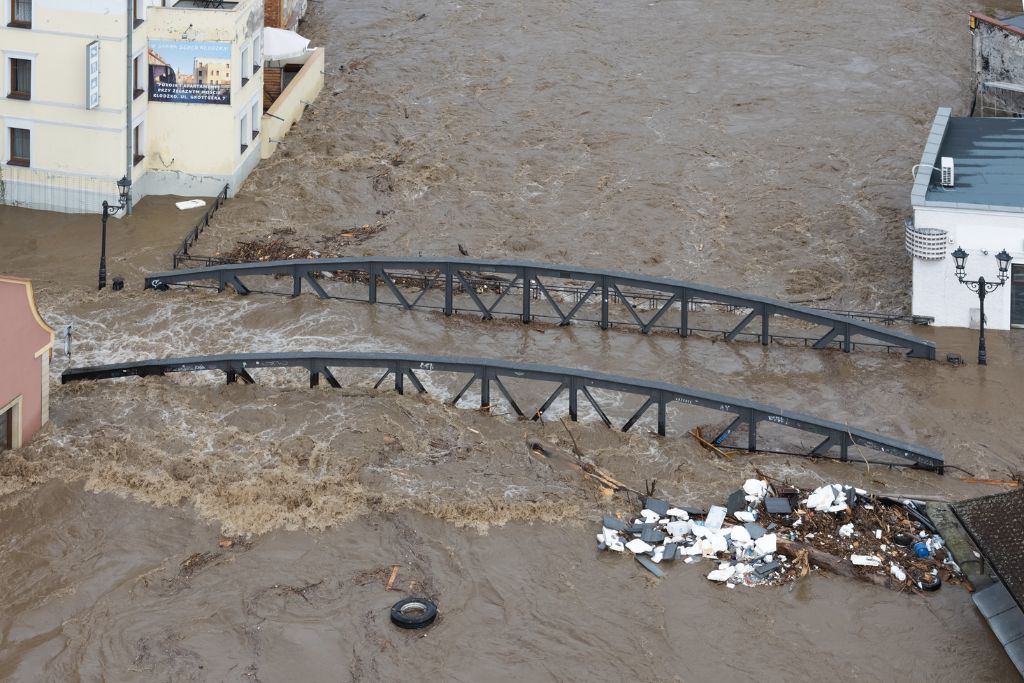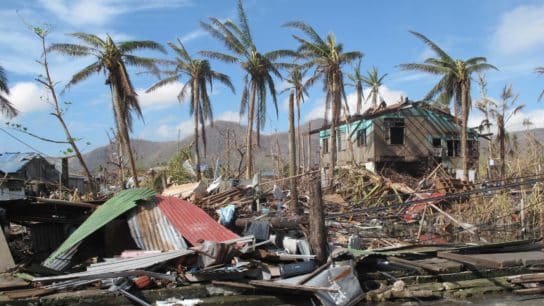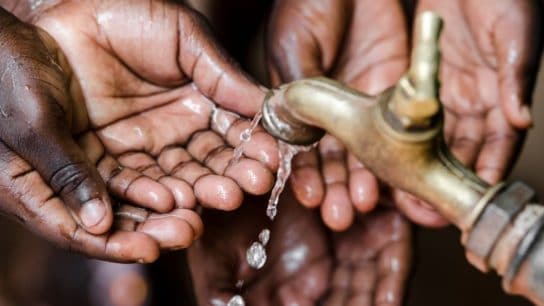October’s Hurricane Milton and Helene topped the list as the two costliest one-off events at $60 billion and $55 billion in damage, respectively.
—
The ten costliest climate disasters of 2024 caused more than $229 billion in damages, according to an analysis by non-profit Christian Aid.
From deadly floods in China, Europe and East Africa to tropical storms in the Atlantic and Pacific, scorching heatwaves in India and droughts in South America, no region was spared by extreme weather events this year, the hottest year on record.
The ranking was compiled based on an analysis of insurance payouts alone, focusing on storms and cyclones due to their significant impact on infrastructure compared to any other type of extreme weather event. Because it does not take into account costs deriving losses in crop production and delays in trading, among others, the true financial toll of these events is believe to be much higher.
North America
The US bore the brunt, with storms and hurricanes costing the country some $180 billion.
October's Hurricane Milton topped the ranking as the most expensive single event, causing $60 billion in damages and killing 25. The category 5 hurricane came just two weeks after Hurricane Helene struck the US, Cuba and Mexico, racking up $55 billion in damages and claiming 232 lives.
An analysis by World Weather Attribution revealed that climate change made Helene’s winds some 11% more intense and its rains 10% heavier. Helene strengthened from a Category 2 to a Category 4 hurricane in just ten hours, fuelled by ultra-warm ocean temperatures in the Gulf of Mexico, which were about 3.6F (2C) above average when the hurricane struck.

A total of 46 smaller storms occurring in the US between January and September collectively killed 88 people and resulted in damages costing more than $60 billion.
Between late June and early July, 70 people died as Hurricane Beryl devastated parts of the Caribbean, the Yucatán Peninsula, and the US Gulf Coast. Beryl marked an early start to the hurricane season, becoming the earliest Category 5 hurricane ever recorded. The Category 5 hurricane ended up costing some $6.7 billion.
More on the topic: Data Visualization: Hurricane Beryl and a New Era of Cyclone Severity
South America
183 people died in May as floods wreaked havoc across 428 municipalities in the southern Brazilian state of Rio Grande do Sul. The floods, which affected 1.5 million people, racked up $5 billion in damages as they led to widespread landslides and a dam collapse.
The city of Porto Alegre was completely cut off. Some 1.3 million residents were left without power after energy companies cut off supplies for safety reasons, and an estimated 80% lacked access to drinking water, as five of the city’s six water treatment plants ceased working. Low-income communities and those living in informal settlements and indigenous villages were particularly affected.
The floods, which displaced nearly 600,000 people, were made twice more likely to occur by human-caused climate change, according to an analysis by World Weather Attribution. They also marked the fourth such environmental disaster in Brazil within the past 12 months.
Asia
In Asia, China and many southeast Asian countries were hit by powerful storms that collectively killed more than 1,100 people.
Record downpours that caused floods and landslides in the southern and central regions of China throughout June and July racked up $15.6 billion in damages.
In September, Typhoon Yagi battered southeast Asia, dumping 25cm (10 inches) of rain in the city of Luzon, Philippines, before moving to Laos, Myanmar, Vietnam and Thailand.
The Philippines, where typhoons are a regular occurrence, endured an extraordinary, late typhoon season this year, which World Weather Attribution said was supercharged by climate change.
Europe
Parts of central and eastern Europe experienced some of the worst flooding events in modern history in September as Storm Boris wrecked havoc Austria, Czech Republic, Hungary, Poland, Romania and Slovakia. The storm unleashed unprecedented rains throughout the region, causing rivers and reservoirs to swell to alarming levels. 26 people died and costs totalled $5.2 billion, according to Christian Aid.
The 4-day downpours were made at least twice as likely and 7% heavier by human-made climate change, an analysis later revealed.

In late October, torrential rains hit Spain’s eastern region of Valencia, unleashing catastrophic flooding that killed 226 people. 500 millimeters (20 inches) of rain – a year’s worth for some locations – fell in just eight hours, trapping people in their homes and cars.
According to Climate Central, a non-profit news organization that analyzes and reports on climate science, the storm was fuelled by warmer-than-usual sea waters. The elevated sea surface temperatures were made at least 50 to 300 times more likely by human-caused climate change.
It was one of Spain's costliest disasters. While the real costs are still being calculated, Christian Aid estimated some $4.22 billion in damages from insurance payouts alone.
'A Political Choice'
Patrick Watt, Christian Aid's CEO, said the suffering caused by the climate crisis is a political choice.
"These events are being supercharged by decisions to keep burning fossil fuels, to allow emissions to rise, and the failure to deliver on financial commitments," Watt said.
The burning of coal, natural gas, and oil for electricity and heat is the single-largest source of global greenhouse gas (GHG) emissions. These are the primary drivers of global warming as they trap heat in the atmosphere and raising Earth’s surface temperature.
Global fossil fuel consumption has more than doubled in the last 50 years, as countries around the world aim to improve their standards of living and economic output. In 2023, all three of the most potent GHGs – carbon dioxide (CO2), methane, and nitrous oxide – reached record highs.
Featured image: UN Women Asia and the Pacific/Flickr.
This story is funded by readers like you
Our non-profit newsroom provides climate coverage free of charge and advertising. Your one-off or monthly donations play a crucial role in supporting our operations, expanding our reach, and maintaining our editorial independence.
About EO | Mission Statement | Impact & Reach | Write for us














